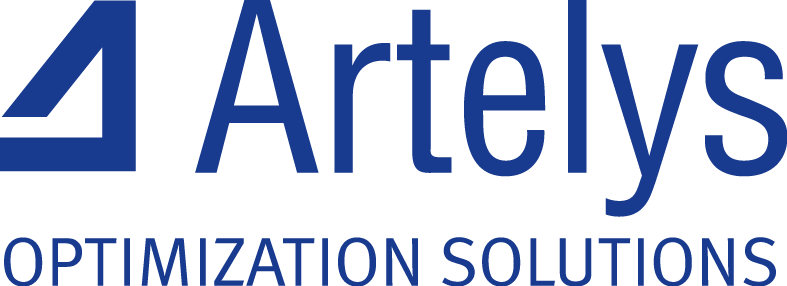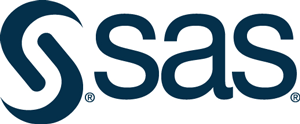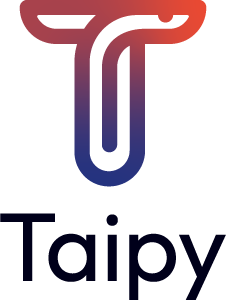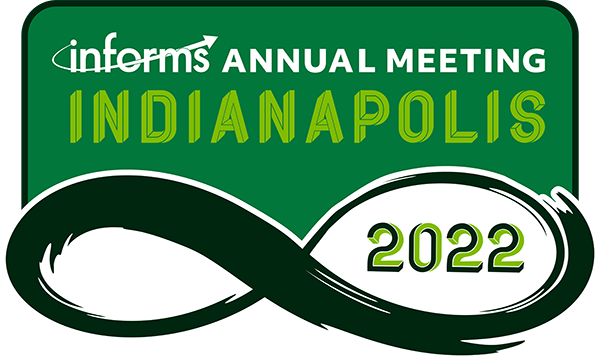
AMPL
Advances in Model-Based Optimization with AMPL
Presented by: Robert Fourer
Sunday, October 16, 5-5:35 pm
Optimization has been fundamental to OR and Analytics for as long as there have been computers, yet we are still finding ways to make optimization software more natural to use, faster to run, and easier to integrate with application systems. This presentation offers a quick tour of ways that AMPL’s modeling framework has been enhanced to support optimization in today’s challenging applications. Topics include:
- Expressing objectives and constraints more directly and understandably
- Exchanging data and results more directly and efficiently, with spreadsheets and with database systems
- Building better interfaces to applications using snapshots, callbacks, and other new features of AMPL’s APIs for popular programming languages
- Deploying optimization in cloud environments and containers
To complement these feature advances, the presentation concludes by describing ways that AMPL is making model-based optimization more accessible, through the new Community Edition, a rewritten NEOS Server client, and free Model Colaboratory examples for teaching and learning optimization.

Artelys Corp
Nonlinear Optimization Using Artelys Knitro
Presented by: Richard Waltz, Senior Scientist, Artelys Corp
Sunday, October 16, 2-2:35pm
Nonlinear optimization is used in many applications in a broad range of industries such as economy, finance, energy, health, 3D modeling, and marketing. With four algorithms and great configuration capabilities, Artelys Knitro is the leading solver for nonlinear optimization and demonstrates high performance for large scale problems. This session will introduce you to Artelys Knitro, its key features and modeling capabilities, with a particular emphasis on the latest major improvements including recent advances in solving mixed-integer nonlinear optimization problems. We will also provide benchmarks highlighting the power of Knitro to efficiently solve large-scale, nonlinear models with hundreds of thousands of variables and constraints.

ABET
Introduction to ABET Accreditation and Computing Accreditation
Presented by: Andrew Borchers
Monday, October 17, 2–2:35pm
Learn why the ABET accreditation process brings value to the more than 4,300 programs at 850 colleges worldwide who have received it and how the Computing Accreditation Commission (CAC) is responsible for reviewing educational programs specifically for the technical disciplines of computer science. Additionally, learn how you can help ABET by becoming a Program Evaluator – the heart of ABET accreditation – who evaluates program materials, visits campuses and participate in accreditation decisions.
Presenter bio:
Andrew Borchers, DBA, CPIM, CLTD is a professor of management and associate dean at the College of Business at Lipscomb University. His teaching and research interests are broad and encompass operations and supply chain management, information systems, and sustainability. He is actively involved as an editor of a case journal and serves in the leadership of several academic societies. Andy has taught internationally in Germany and China. He conducts professional training seminars for the Association for Supply Chain Management (formerly APICS) and serves on the Computer Accrediting Council of ABET.

DecisionBrain
Quickly deploy your optimization models to the Cloud with DBOS!
Presented by: Patrice Oms and Issam Mazhoud
Tuesday, October 18, 11-11:30am
DecisionBrain Optimization Server (DBOS) is designed to help build and deploy fully scalable optimization-based applications. It enables optimization developers to focus on their models, benchmark them and allows them effortlessly to deploy those models in production in a context that will support multiple parallel runs on dedicated resources.
To achieve this, DBOS lets you encapsulate any computational module (optimization solvers, analytics modules, etc.) into so-called “Workers.” Workers can be deployed on dedicated resources (local, private, or public cloud) to ensure the best execution time. When deployed on Kubernetes, Workers may be activated on-demand to reduce cloud costs.
DBOS can be used in a stand-alone mode to run computations or it can also be integrated with existing applications to let them provide scalable and on-demand optimization capabilities and powerful monitoring capabilities.
DBOS also has a benchmarking functionality that allows you to benchmark your optimization engine across versions, different datasets, or models.
In this presentation, we will demonstrate how this technology can be used to:
- Encapsulate an optimization model in a Worker
- Deploy this Worker on a Kubernetes cluster using resources only on-demand
- Monitor Real-time Executions
- Benchmark models and datasets

FICO
End-to-End FICO® Xpress Insight Tutorial: From Data to Decisions for Non-Technical Business Users
Presented by: Baykal Hafizoglu, Solution Consultant
Monday, October 17, 2:40-3:15pm
You have a team with a great analytics background. They’ve developed advanced analytical tools using Python, R, or your current optimization solver. They’ve derived crucial insights from your data and figured out how your decisions shape your customers’ behaviors. Now it’s time to put these critical analytical insights into the hands of your non-technical business users.
In this tutorial, you’ll learn how FICO’s Xpress Optimization solutions (including Xpress Mosel, Xpress Workbench, Xpress Solver and Xpress Insight) make it possible to embed your analytic models in business user-friendly applications. See how to supercharge your analytic models with simulation, optimization, reporting, what-if analysis, and agile extensibility for your ever-changing business. Plus, you’ll discover how to use the new View Designer to reduce GUI development times from minutes to seconds.

Frontline Systems Inc.
Presented by: Daniel H. Fylstra, President
Sunday, October 16, 2:40-3:15pm
See a new approach to risk analysis of machine learning models in action in this tutorial session. We’ll explain why the traditional machine learning approach – training a model on a data set, validating it on another data set, and testing it (or comparing it to other models) on a third data set isn’t “risk analysis” – and isn’t sufficient to assess or quantify the risk that the model will perform differently than expected when deployed for production use, with disappointing or even costly business consequences. We’ll discuss the complexity and time required to apply conventional risk analysis during machine learning model development. And we’ll demonstrate a new, patent-pending approach that automates and integrates simulation-based risk analysis into the machine learning development process. As a side benefit, we’ll show a new, fully automated approach to synthetic data generation, with many potential uses, and a novel use of such synthetic data in risk analysis. As time permits, we’ll demonstrate use of these methods in our cloud platform RASON® V2023, in Excel with Analytic Solver® V2023, and in your choice of programming languages with Solver SDK® V2023 – all three are currently available.

GAMS
Turning Models Into Applications– GAMS Engine, GAMS Connect, and GAMS Transfer
Presented by: Dr. Atharv Bhosekar & Dr. Steven Dirkse
Tuesday, October 18, 8:40-9:15am
The right tools help you deploy your GAMS model and maximize the impact of your decision support application. If your model requires significant computational resources to solve, you may benefit from GAMS Engine, a powerful tool for solving GAMS models either on-prem or in the cloud. Engine acts as a broker between applications or users with GAMS models to solve and the computational resources used for this task. Central to Engine is a modern REST API that provides an interface to a scalable containerized system of services, providing API, database, queue, and a configurable number of GAMS workers.
If you are working with data stored in different formats, or you are working with an environment such as Python, Matlab, and R, you will benefit from the GAMS Connect framework and GAMS Transfer API. GAMS Connect provides unified and platform-independent data exchange between different formats (CSV and Excel). GAMS Transfer API (available in Python, Matlab, and R) makes moving data between GAMS and your computational environment fast and easy.

Gurobi Optimization
Intro to Gurobipy: Gurobi for Python
Presented by: Juan Antonio Orozco Guzman, Optimization Engineer, Alison Cozad, Ph.D., Optimization Engineer & Ed Klotz, Senior Mathematical Optimization Specialist
Monday, October 17, 8:40-9:15am
Join us and discover why gurobipy is our most popular interface and how it can help you to harness the power of mathematical optimization. In this tutorial, we’ll walk through the modeling constructs and data structures that are necessary to translate a math formulation into a machine-readable format. Finally, we’ll review some of the best practices —and a few pet peeves— for deploying optimization models in Python. Be sure to bring your laptop if you’d like to follow along with us!
Fundamentals of Ill Conditioning
Presented by: Ed Klotz, Ph.D, Gurobi Optimization
Tuesday, October 18, 2:40-3:15pm
Highly ill conditioned mathematical programming models can pose time-consuming challenges to practitioners regarding both solver run time and accuracy of solutions. This tutorial will present fundamental concepts and definitions that can help the practitioner more effectively assess the level of ill conditioning in a model and reduce development and maintenance work. Some common but easily remedied model characteristics that can cause ill conditioning will be described, and some practical examples will be discussed.

Institute for Defense Analyses
Institute for Defense Analyses Overview
Presented by: Dr. Dave Hunter
Sunday, October 16, 8:40-9:15am
This presentation intend to inform the audience about IDA, our employees, and our sponsors. IDA exists to promote national security, preserve the public welfare, and advance scientific learning by analyzing, evaluating, and reporting on matters of interest to the US Government.

JMP, A SAS Company
No-Code Text Mining with JMP Pro
Presented by: Ross Metusalem
Monday, October 17, 5-5:35pm
Unstructured text can be a rich information source, provided the right tools to transform it into structured data for further analysis. JMP Pro is powerful, no-code data analysis software, and this tutorial will demonstrate JMP Pro’s text mining tool, Text Explorer. We will apply Text Explorer to real-world data to perform sentiment analysis, topic analysis, and text regression. We also will see how to use outputs from text mining as inputs to further analyses.

KNIME
Codeless Data Science with KNIME
Presented by: Satoru Hayasaka and Aline Bessa
Sunday, October 16, 11:40am-12:15pm
In this tutorial, we will introduce KNIME Analytics Platform, an open-source tool for codeless data science. We will show how KNIME can be used to tackle a variety of data science tasks, from data ingestion to interpretation of model results. The tutorial will include a live, practical demonstration of the tool.

MathWorks
Optimizing Manufacturing Production Processes with MATLAB
Presented by: Sean de Wolski
Tuesday, October 18, 11:40am-12:15pm
Manufacturing processes tend to be capital intensive, operate with thin profit margins, and face continued pressure to minimize environmental impact and waste. Process modeling tools are critical for analyzing and designing efficient processes. In this tutorial, we will discuss how you can optimize manufacturing production processes with MATLAB, across industry applications such as semiconductor manufacturing, pharmaceutical manufacturing, and chemical blending. Using a manufacturing process example, we will see how to assemble discrete-event simulation models. With a model of sufficient fidelity assembled, we will explore what-if scenarios, and then answer “how many?” or “how much?” type questions with a global optimization method to maximize throughput or minimize cost.

Nextmv
A developer-first approach to decision modeling with the Nextmv CLI and SDK
Presented by: Ryan O’Neil, Ph.D.
Sunday, October 16, 11-11:30am
Nextmv is building a decision automation platform, which includes a developer-friendly toolset for building, testing, deploying, and operating optimization models. We will give you an overview of what’s possible with the Nextmv CLI and SDK and provide several examples to demonstrate its capabilities – from vehicle routing with a hybrid ALNS – Decision Diagram solver to workforce scheduling with an open source MIP solver.

Optimization Direct
ODH Python primer
Presented by: Robert Ashford
Monday, October 17, 11:40am-12:15pm
This short tutorial shows participants how to build a basic model using the ODH|CPLEX in Python. This session includes setting the Python environment, reading data from a csv or spreadsheet, creating variables, objective functions, and constraints, solving the model, and returning the results. Additionally, this session points the participants to further reading so that they may expand their capabilities. Furthermore, we will present the brand new ODH|Gurobi generic API and demonstrate it in Python.

Provalis Research
Monday, October 17, 8-8:35am
The renewed enthusiasm for artificial intelligence (A.I.), and more particularly for techniques based on deep learning and other forms of neural networks, means that we are trying to apply these latest techniques to all problems requiring a supervised or unsupervised form of learning. But this unprecedented wave of interest often makes us forget there are other forms of machine learning that have proven themselves over time. During this presentation we will compare certain forms of machine learning with and without the contribution of neural network techniques in order to assess the importance and the nature of a possible contribution (if any). To do this, we will examine different tasks in the field of automatic language processing, namely topic modeling, automatic word disambiguation, and the development of semantic lexicons. We will also try to identify in which context an approach based on neural networks or deep learning deserves consideration.

SAS
Building and Solving Optimization Models with SAS
Presented by: Rob Pratt, Senior R&D Manager
Monday, October 17, 5:40-6:15pm
SAS offers extensive analytic capabilities, including machine learning, deep learning, natural language processing, statistical analysis, optimization, and simulation. SAS analytic functionality is also available through the open, cloud-enabled design of SAS® Viya®. You can program in SAS or in other languages – Python, Lua, Java, and R. SAS Analytics is also equipped with AI-enabled automations and modern low-code or no-code user interfaces that democratize data science usage in your organization and offer unparalleled speed to value.
OPTMODEL from SAS provides a powerful and intuitive algebraic optimization modeling language and unified support for building and solving LP, MILP, QP, conic, NLP, constraint programming, network-oriented, and black-box models. This tutorial will include an overview of the optimization capabilities and demonstrate recently added features.

Springer Nature
The Researcher’s Publishing Toolbox: Operations Research & Optimization with Springer Nature
Presented by: Elizabeth Loew (Executive Editor, Books) & Matthew Amboy (Executive Publisher, Journals)
Tuesday, October 18, 5-5:30 PM
Take your research to the next level and explore our trusted community of books and journals. In this session, Springer Nature’s book and journal Publishers will share insights and tips for potential authors, presenting recent tools and platforms that have been implemented (or are in fast-track development) in order to improve and enhance the publication process. In addition to highlighting these recent advances, we will also showcase select publications that can be used to learn or apply innovative modeling and programming tools.
For a full list of our latest offerings and a 20% discount, visit Springer Nature at Booth #27!

Stukent
Tuesday, October 18, 5:40-6:10pm PM
Coming Soon

Taipy
From Algorithm to Production App. Low Code, High Performance
Presented by: Martin Shell V.P Customer Success
Tuesday, October 18, 2-2:35pm
Data scientists focus on the challenges of developing algorithms to solve complex predictive and prescriptive analytics problems. The greatest challenge often is turning these models into applications accessible to business users. We will present the two components of Taipy; Taipy GUI and Taipy Core. Taipy GUI is a low-code highly responsive visualization framework that facilitates the development of interactive web applications built on data-centric algorithms. Taipy Core facilitates the management of data flow through multi-stage pipelines and scenario management. Working in concert, these two components bridge the gap between data science and production-grade application.

University of Arkansas
Analytics in the Classroom: A Hands-on Approach
Presented by: Ron Freeze, Director of Enterprise Systems, Sam M. Walton College of Business
Monday, October 17, 11-11:35am
The University of Arkansas would like to invite you to this workshop that will provide faculty participants with hands-on training in the SAS Viya analytics applications. These exercises focus on the use of data analytics and big data. The workshop will focus on connecting directly from SAS Viya to the Dillards data set that resides on the Teradata Intelliflex platform at the University of Arkansas. The data set used is updated weekly by Dillards and allows predictive analytics along with machine learning (and other analytic techniques) to be tested and validated in real time during the semester. All materials and resources demonstrated at the workshop are available free of charge to the participants and the students in their courses.

